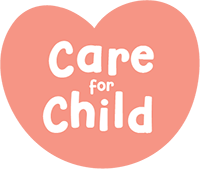Around 6 months, your baby will be ready to experiment with pureed foods. However, keep in mind that we are using foods as supplements here. Because your child will be adapting to new food habits for up to two years, their primary source of nutrition will still be infant formula or breast milk. Cereals, oatmeal, and rice are common first foods for babies. However, some people skip pureed vegetables, fruits, and meats.
It is usual for a baby's schedule to change daily or to eat different amounts of food on different days. However, remember that your baby needs to eat every 2-3 hours, five to six times daily. This article by Care For Child will tell you more about the baby feeding schedule for 6 months and some tips and tricks for feeding a newborn baby.
What Should You Feed a 6-Month-Old Baby?
If your child is eating cereal, see if they can stick to one feeding for at least two weeks. You can then increase it to two feedings and introduce new foods. Green vegetables are the first choice of children, but some prefer bananas, which should be included in your baby's diet alongside pureed foods.
Wait at least three days before introducing new food to your child to help you identify any food intolerances or allergies, which should be taken seriously. If you have an allergy or food intolerance, you must consult your pediatrician and take the necessary precautions.
- Vegetables and Fruits
Here are some fruits and vegetables you can feed your child:
- Mashed potatoes
- Watermelon
- Bananas
- Boiled Veggies (carrot, beans, beetroot)
- Non Vegetarian
Animal products are high in iron, protein, amino acids, and other essential nutrients. Here are some foods you can introduce into your baby's diet:
- Scrambled Eggs
- Other Food Products
Other foods you can include in your 6-month-old baby's meal plan are:
- Cheese
- Butter
- Healthy soups or broths
- Yogurt
- Cereal
- Purees
Baby Feeding Schedule 6 Months
The key to following a feeding plan is ensuring your child is satisfied after each meal. Consistency in feeding times is also an excellent way to stay on track. We've included a few sample schedules to help determine how much solid food you can give your baby. Here’s a sample feeding schedule for 6-month-old babies:
|
Time |
What to Feed |
|
7:00 AM |
6 ounces of milk (Nurse/ Bottle) |
|
10.00 AM |
Serve Oatmeal or Rice Cereal or Mashed Fresh Fruits |
|
2:00 PM |
Lunch – serving pureed or mashed vegetables. |
|
17:30 |
Breastfeed or a bottle of milk |
|
7:30 PM |
Dinner – offer a veggie/fruit/meat option |
Foods to Avoid for a 6-Month-Old Baby
Most parents wonder if they can feed their babies all solid foods. Yes, but not anytime soon. To be clear, here is a list of foods to avoid with your 6-month-old:
- Solid Foods with Large Chunks: Foods in large chunks, such as carrots, cauliflower, and so on, can pose a choking risk. Instead of large chunks, soft, boiled, small, or sliced pieces can be served. If you believe that small pieces will be difficult for the baby to swallow, mash them even more.
- Fish: Special varieties of fish, such as tuna, or those containing high levels of mercury and heavy metals, should be avoided while your baby is breastfeeding.
- Raw Honey: Since raw honey contains spores or microorganisms, it causes infant botulism. At this age, your baby's digestive tract is still immature, so its stomach does not produce enough acids to fight bacteria.
Bottom Line
Deciding what, when, and how to feed a baby can be difficult, especially during the solid transition. Caregivers do not need to rush the transition to solids or worry that babies are not eating enough as long as babies receive regular breast milk or formula.
Some babies take longer than others to accept solids, while others will eat anything. A good schedule should work for both the baby and the family. This schedule is subject to change, which is acceptable.

